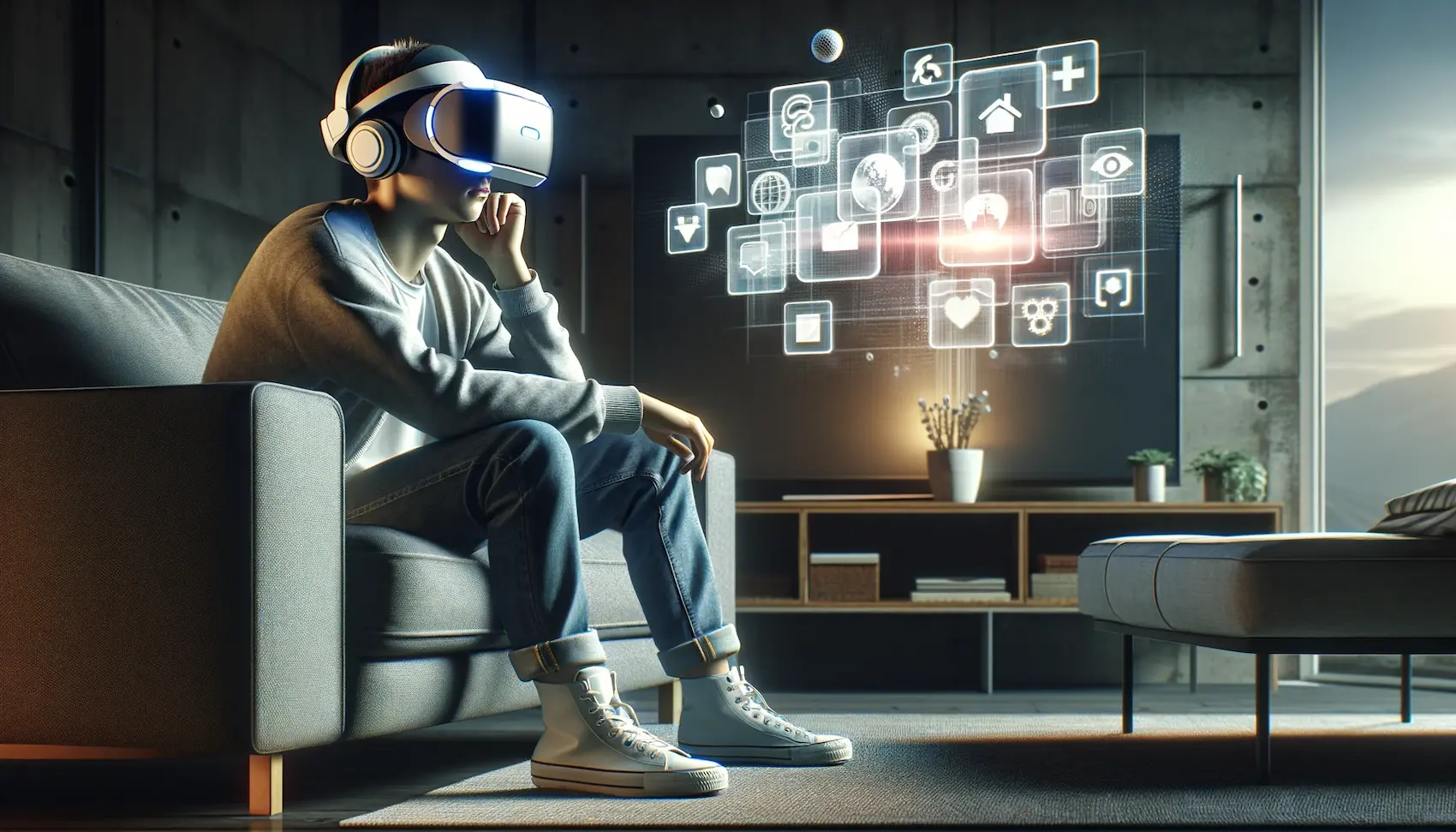In a time when the physical and digital worlds interact more tightly than ever there is a new dimension of technology is forming to revolutionize the game of user experience spatial computing. The term conjures up a vision of interactive virtual environments and virtual reality that do not just create entertainment but fundamentally alter how we do our work, live and even think.
What is the essence of spatial computing and what is it that makes it the cutting-edge of human-technological interaction? No matter if you’re a technology enthusiast or a software developer seeking the most innovative technology This comprehensive study will explore the intricacies that are involved in spatial computing. From its earliest ideas to its practical applications and the way it’s poised to change, let’s go on an informative journey through the realm of spatial computing.
Comprehending Spatial Computing
Spatial computing is the term used to describe the broad range of possibilities for technologies that combine the virtual and physical worlds. It’s typically used in conjunction with the augmented reality (AR) and VR, virtual reality (VR) as well as mixed reality, in which digital media and physical space be interacted with in real time.
At its heart spatial computing seeks to create digital spaces that are compatible with physical world and can be used with a spatially logical manner. This means that users are able to apply digital information to the real world or even immerse themselves in synthetic environments that mimic the physical world in three dimensions.
The Building Blocks of Spatial Computing
At the most fundamental level, spatial computing consists of many key elements:
Sensors and Input Devices
The foundation is laid for the use of sensors that track spatial movement and position as well as input devices that allow people to communicate with their digital world.
Processing Power
Complex algorithms and massive computational resources are required to process the huge amount of sensor data and to create 3D experiences that are real-time.
Display Technologies
From head-mounted displays to VR as well as AR glasses to projectors, these technologies allow digital content to the physical world of the user.
User Interfaces
Spatial computing needs innovative and user-friendly interfaces like gesture command or spoken commands that facilitate interaction with 3D space.
The Rise of Spatial Computing
The development to the realm of space computing, from the theoretical ideas to cutting-edge technology has been rapid. Let’s look at the most significant developments and the rapid growth that is spatial computing.
Early Days: Laying the Foundation
The idea of spatial computing began in the early 1960s when display devices that were mounted on head as well as computer graphics. It wasn’t until the year 2000 that advances in processing power and miniaturization led to the development of practical applications.
Launch of Early AR and VR Systems
In the mid-2010s, we saw the advent in the market of affordable AR as well as VR systems that introduced spatial computing to the homes and into the hands of millions of people, generating curiosity and innovating.
Mainstream Adoption
Magic Leap’s acquisition AR company Magic Leap garnered tremendous attention from the tech industry as well as investors, signalling an important moment in the possibilities of commercial applications for spatial computing.
Enterprise and Industry Embrace
Industries that range from architecture, healthcare and automotive to entertainment and retail have begun to use spat computing to train sales, design customer experience and many more.
Current State: A Maturing Ecosystem
The field of the field of spatial computation is evolving past early adoption and into a advanced ecosystem. With the support of a number of tech giants, continuing R&D expands the limits of what’s possible.
Future Horizons: The Promise of Spatial Computing
In the future, the possibilities for applications for spatial computing appear limitless. The integration of edge computing, 5G as well as artificial intelligence will further increase the capabilities and broaden the applications of spat computing.
The Implications of Spatial Computing
Spatial computing is a major change on how we live and work. Let’s examine the way this technology is poised to change the way we live our lives:
Reimagining User Experience
Spatial computing changes the user experience, making it more user-friendly and engaging. Virtual showrooms, interactive environments for learning the possibilities of communicating the information more compelling manner are almost limitless.
Enhancing Creativity and Design
Architecture and designers have long depended upon 3D models to visualize their ideas. Spat computing allows making models, exploring or manipulating 3D models can be done within reality, increasing the process of designing and collaboration, leading to improved results.
Revolutionizing Work and Collaboration
The technology allows remote collaboration within a virtual space. This makes teammates from various regions of the globe to collaborate as though they were all in an identical room. This is not just a way to save time and resources, but can also open new avenues of communication and creativity.
Powering the Future of Education
Through the creation of immersive learning experiences spat computing holds the potential to change education. Students will be able to engage with the past, discover areas they’ve just read about and grasp abstract concepts using the hands-on, visually-oriented way.
Developers’ Guide to Spatial Computing
If you’re a developer looking to get into the field of spatial computing for the first time, here’s a thorough step-by-step guide:
Learning the Basics
Begin by learning the fundamental aspects of spat computing, which include 3D graphics User interaction design in 3D space, as well as the specific challenges of interactions and rendering.
Choosing a Platform
Determine if you’d like you will develop in AR, VR, or a mixed-reality platform. Each platform has its own collection of development tools languages, programming languages, and best methods.
Mastering the Tools
Get familiar with the SDKs and development environments (Software Development Kits) that are available for your selected platform. Tools such as Unity, Unreal Engine, ARKit and ARCore are crucial for creating spatial applications.
Implementing Core Features
Important features to concentrate on include spatial mapping anchor points, spatial mapping along with 3D audio, anchor points, as well as gesture recognition. These are crucial to provide an appealing and comfortable spatial experience.
Testing and Iterating
Testing is vital when it comes to spat computing, since the user experience is heavily dependent on physical environments and the interaction with users. Continuous iteration on the basis of the real-world experience and feedback from users is essential.
Exploring Advanced Concepts
As you progress as you gain experience, look into more advanced topics such as machine learning to improve interaction and spatial sound design and networked experiences that allow many users to communicate within the same space.
Real-World Applications
Spatial computing has already made an enormous impact on various industries. Some of the most well-known real-world applications are:
Healthcare and Medical Training
From visualizing medical information and teaching surgery procedures within a safe setting, spat computing is being credited as a game changer in the field of healthcare.
Architecture and Design
Architects can make use of AR to determine the way that a design will look and feels when it is in its planned site long before the initial brick is laid, which can affect both the structural and aesthetic aspect of the building.
Retail and Consumer Experience
Virtually trying on and examining items at home prior to purchase are becoming commonplace features which are enhancing shopping and influencing purchase purchases.
Gaming and Entertainment
Spatial computing lies at the foundation of next-generation entertainment and gaming experiences offering unparalleled levels of interaction and immersion.
Training and Education
It’s employed to provide training on the job for complicated machinery to lessons in which ancient civilizations are brought into the present in the class.
Addressing Challenges and Ethical Considerations
Technology is not without its ethical challenges and ethical dilemmas. Spat computing raises issues regarding security, privacy, as well as the possibility of addiction are a source that are of concern. It’s also crucial to ensure accessibility, inclusivity and a harmony between the digital and real worlds.
The policymakers and innovators are working to develop the best practices and guidelines which will guide the development and implementation of the use of space computing in an ethical and ethical manner.
Final Thoughts
Spatial computing is a revolutionary technology in the human-computer interface which could revolutionize our digital experience starting from scratch. This is a field that’s full of possibilities for those who are who are willing to explore new technological frontiers.
If you’re a young developer, a leader in the industry planning the next step, or just a fanatic intrigued at the possibilities of the era technology of spatial computation is coming to an end. Begin exploring the possibilities of technology that is immersive. Make AR and VR projects using no-code platforms such as PlugXR. As technology for no-code develops it will be able to reach out to a wider population.
It’s an exciting moment to be on the forefront of this new frontier. Let’s harness the power of spat computing in order to create a future in which the boundaries of what’s possible can only be defined by imagination.




